What are AR loyalty programs?
AR loyalty programs combine augmented reality technology with traditional rewards systems to create more immersive customer experiences. Instead of simply collecting points or redeeming discounts, customers engage in interactive digital experiences like AR treasure hunts, gamified challenges, or virtual product try-ons while earning rewards.
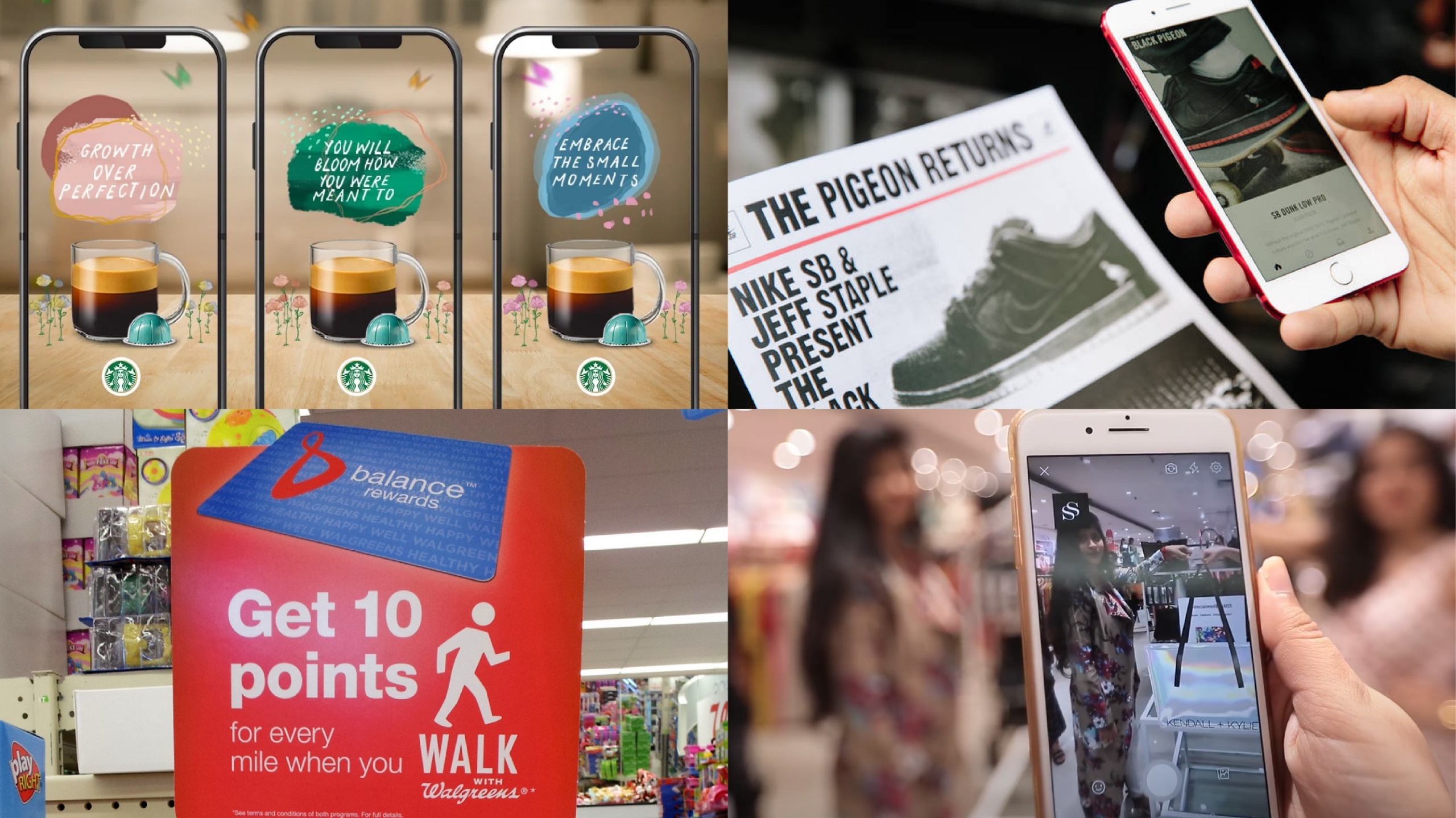
The result? A loyalty program that is no longer about transactions but about memorable interactions that customers want to repeat and share.
Why are brands adding AR to loyalty programs?
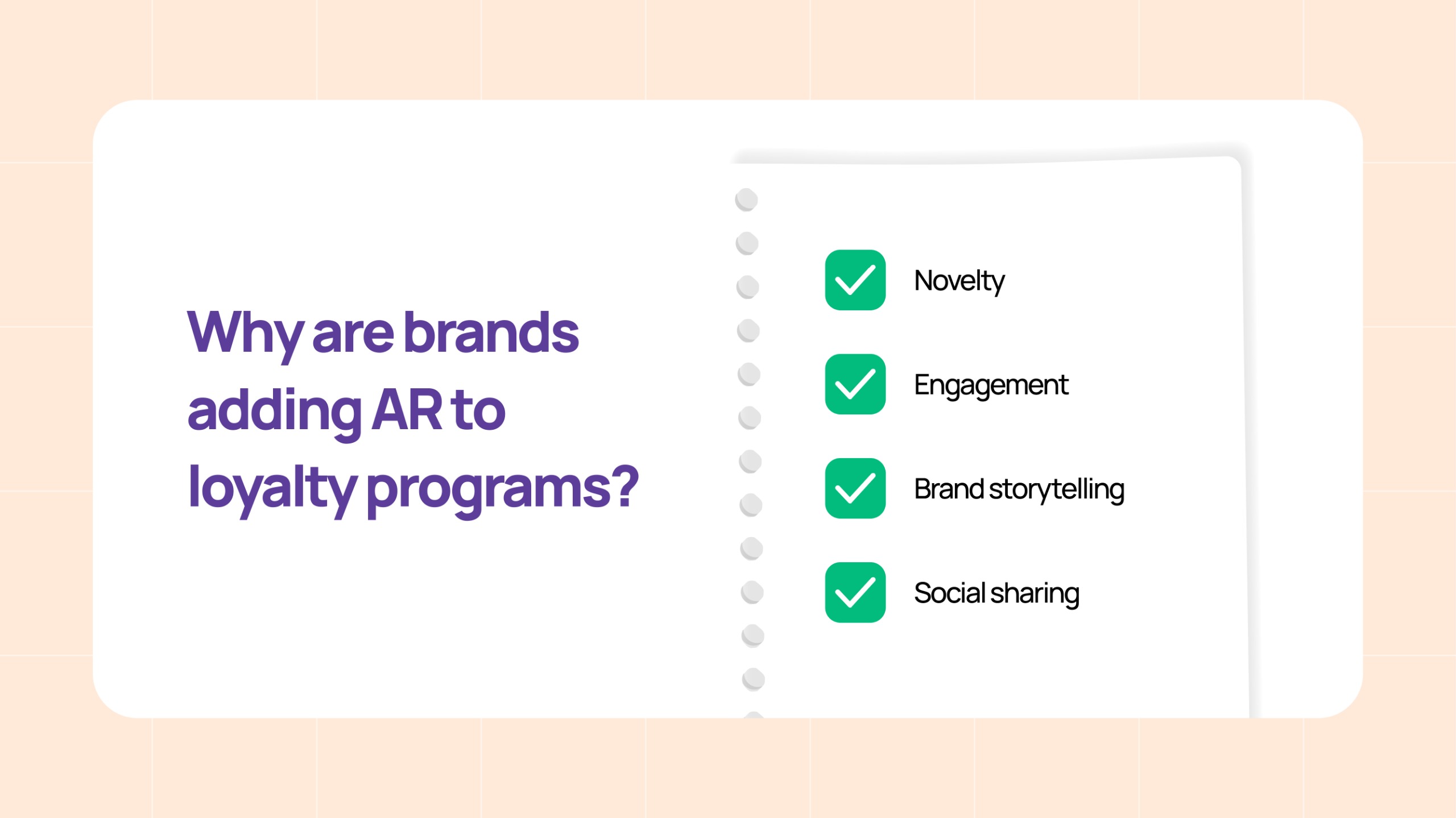
Most traditional loyalty schemes plateau because they feel repetitive. Customers eventually stop noticing points or discounts. AR disrupts this pattern by adding:
- Novelty – A fresh reason for customers to keep checking back.
- Engagement – Fun, playful experiences replace passive reward-earning.
- Brand storytelling – AR can educate customers (e.g., where a product comes from) while entertaining them.
- Social sharing – Customers share AR moments on social media, boosting organic brand reach.
In short, AR gives loyalty programs a sense of adventure and positions the brand as innovative and future-ready.
How does AR gamification boost loyalty?
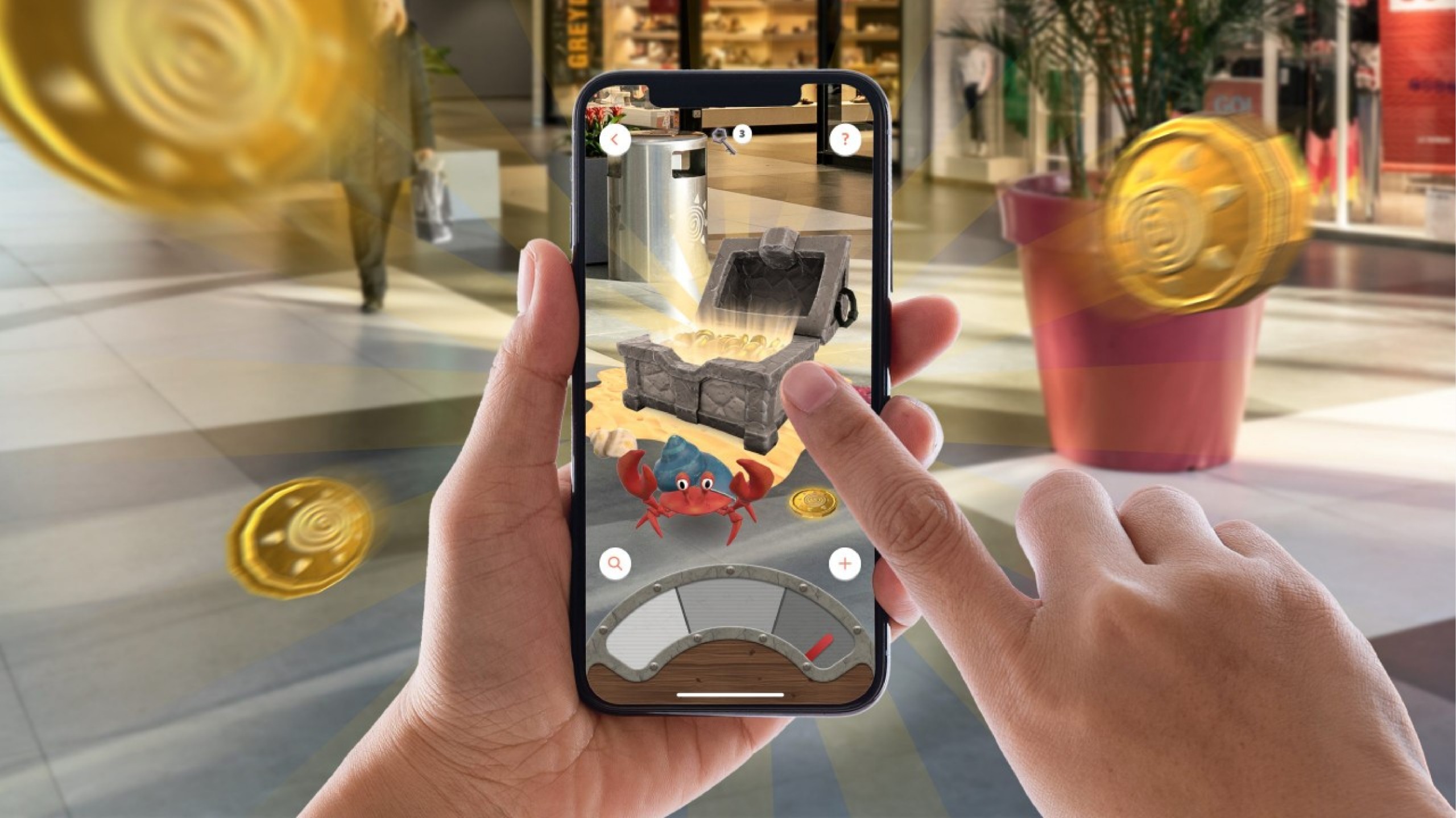
Gamification has always been a cornerstone of loyalty, but AR takes it to the next level.
- City-wide hunts: Sports leagues have launched AR trophy hunts where fans physically move across cities to unlock digital rewards.
- In-store play: Customers can scan aisles or shelves to reveal AR games that instantly grant coupons or exclusive discounts.
- Product drops: AR reveals hidden sneakers, limited editions, or festival products that can be unlocked before public launch.
This makes loyalty less about earning points and more about earning experiences. Customers get not just discounts, but stories worth sharing.
Can AR loyalty programs be personalized?
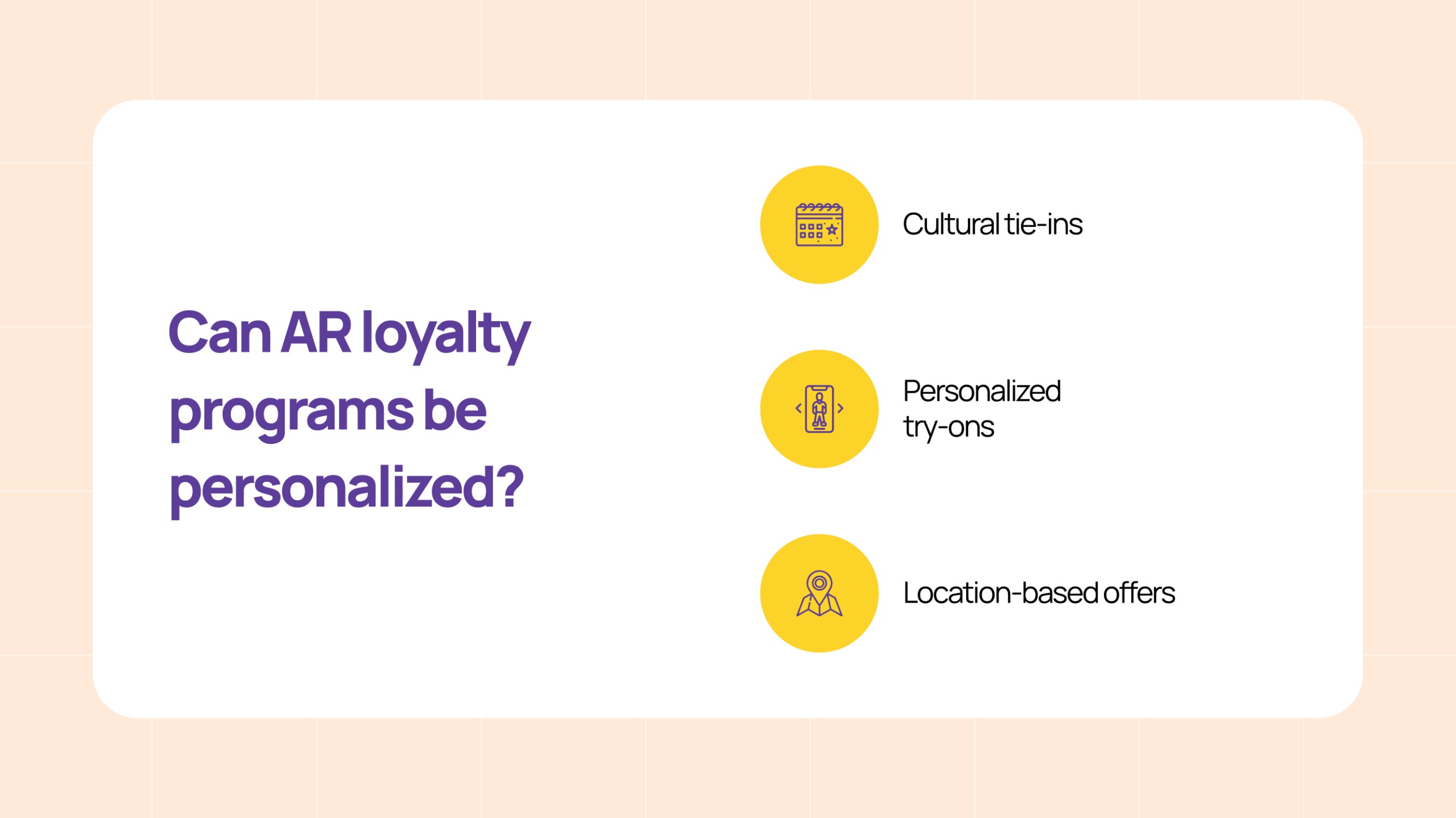
Yes, and personalization is one of AR’s greatest strengths. By connecting AR with loyalty data, brands can create contextual experiences:
- Cultural tie-ins: During festivals, AR filters can blend traditional motifs with product promotions, making campaigns locally relevant.
- Personalized try-ons: Fashion, beauty, and furniture brands use AR to help customers “see before they buy,” with rewards linked to trials.
- Location-based offers: Customers can unlock AR coupons only when visiting certain stores or regions.
Personalization in AR communicates: “This was designed for you.” That message builds a deeper emotional bond than discounts ever could.
What are real-world examples of AR loyalty programs?
- Starbucks – Uses AR on cups and packaging. Customers unlock 3D experiences like coffee farm tours, games, and sustainability stories.
- Nike (SNKRS app) – Sneaker lovers join AR scavenger hunts across cities, unlocking exclusive early access to new drops.
- Walgreens – Offers AR-based health challenges through its Balance Rewards program, encouraging wellness while rewarding participation.
- Shoppers Stop (India) – The retailer integrated AR into in-store activations, such as the Kendall + Kylie handbag launch. Customers could interact with AR experiences via Facebook’s AR tools, blending fashion discovery with playful brand engagement. While not a full-scale loyalty integration, it shows how Indian retailers are testing immersive experiences that could evolve into loyalty-linked initiatives.
These case studies show AR is not just a gimmick, it’s a tool for repeat engagement, community participation, and product discovery.
What are the benefits of AR loyalty programs?
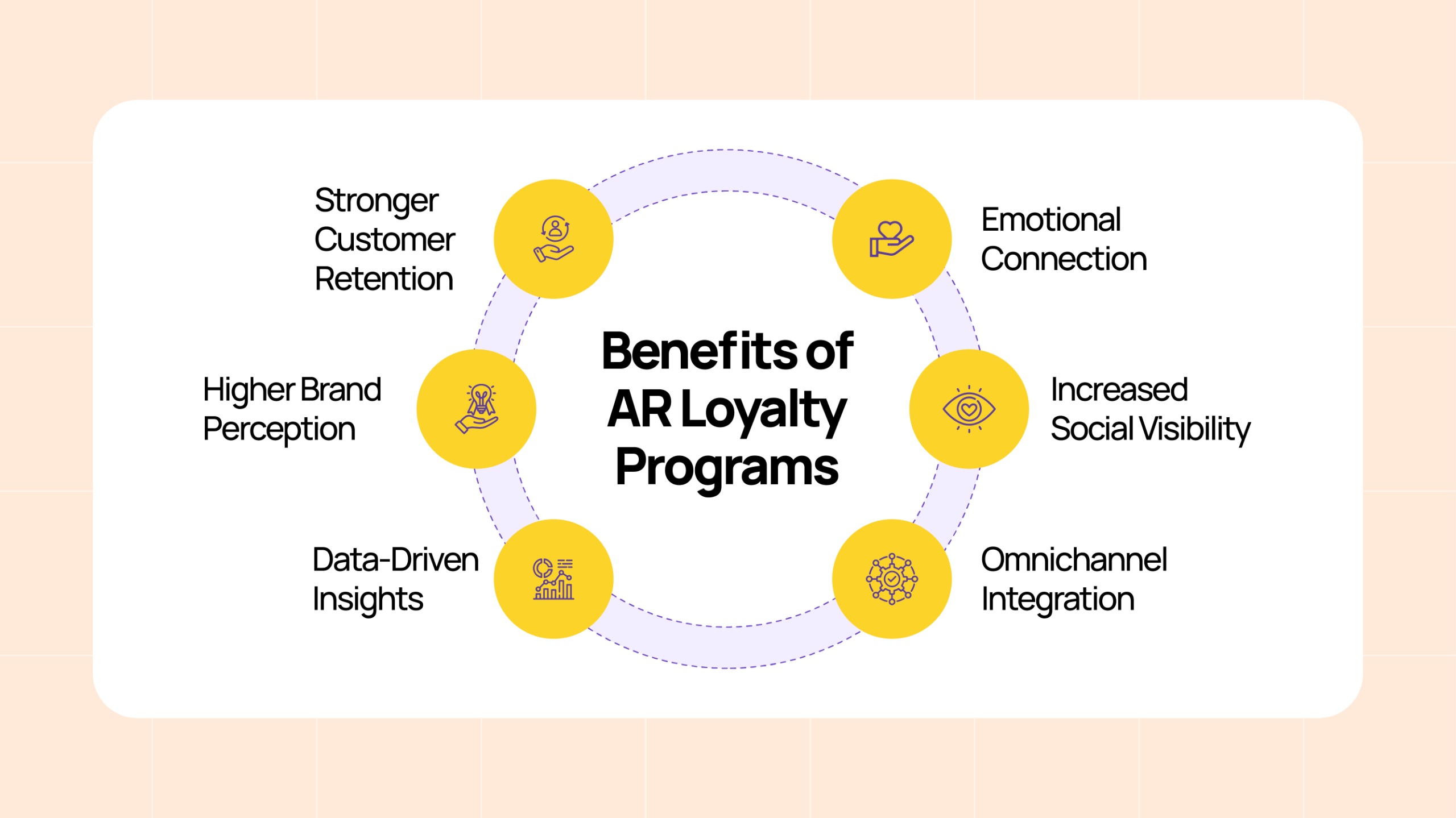
- Stronger Customer Retention – Interactive rewards make customers curious about future experiences, boosting repeat visits.
- Higher Brand Perception – AR positions brands as innovative, tech-savvy, and future-ready.
- Data-Driven Insights – Every AR interaction provides behavioral data: which campaigns people engage with, which products they interact with, and how often.
- Emotional Connection – Experiences tied to culture, play, or personalization create loyalty beyond discounts.
- Increased Social Visibility – Many AR experiences are naturally shareable, driving organic reach.
- Omnichannel Integration – AR works both online (apps, social media) and offline (in-store activations), connecting multiple customer touchpoints.
What challenges should brands expect?
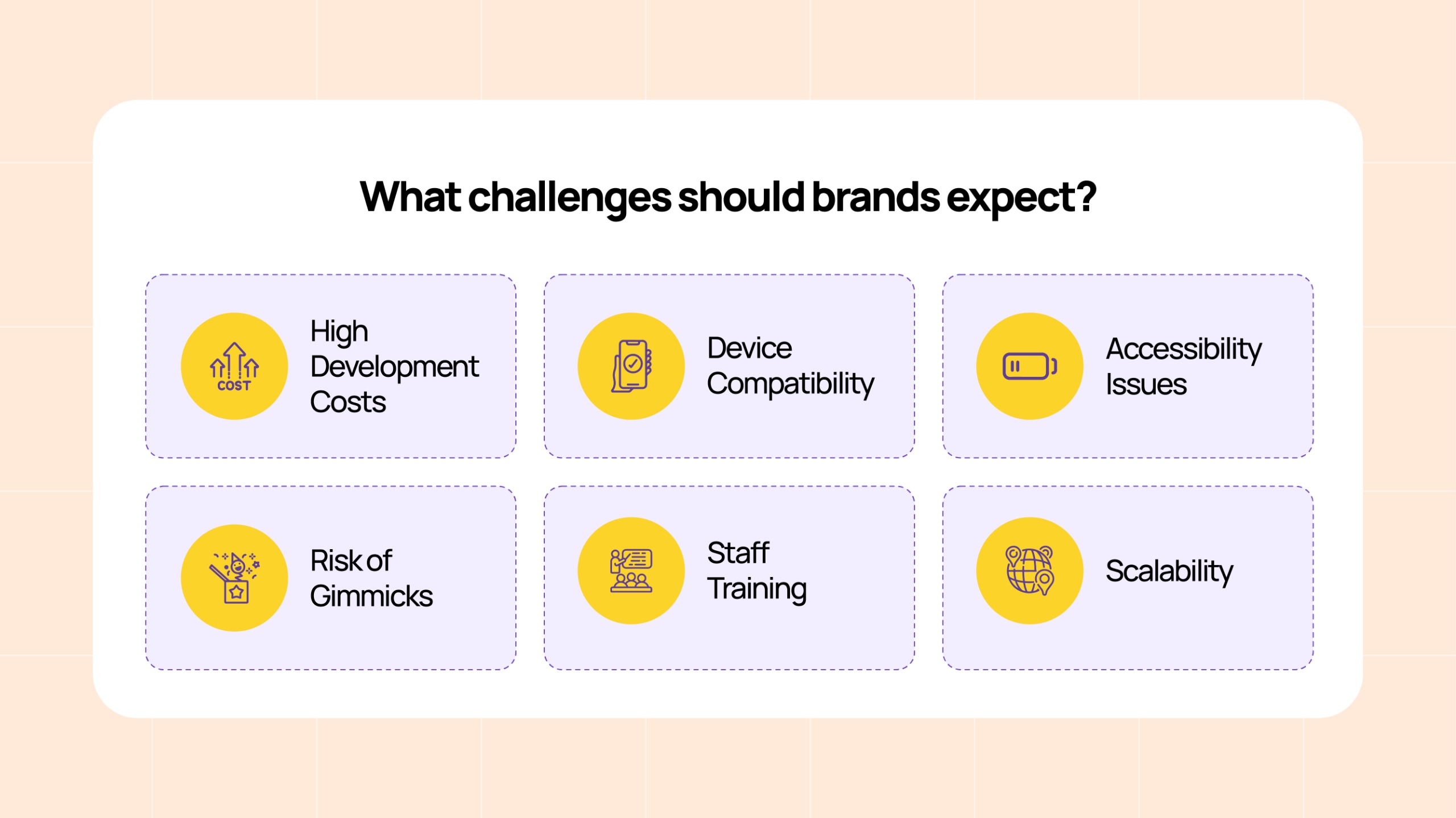
While powerful, AR loyalty programs require careful planning.
- High Development Costs – Creating custom AR games or filters can be expensive.
- Device Compatibility – Customers use different smartphones, so AR must work across models and operating systems.
- Accessibility Issues – Data usage, storage, and battery drain can discourage users.
- Risk of Gimmicks – AR must add real value, not just novelty, otherwise customers lose interest.
- Staff Training – For in-store AR activations, teams must know how to guide customers.
- Scalability – Brands must ensure AR campaigns are easy to update and repeat across locations.
The key is to balance innovation with utility – ensuring AR enhances the program, not overshadows it.
What’s the future of AR loyalty?
Loyalty is moving from transactions to experiences. In the future, expect programs where:
- Rewards come from interactive AR quests rather than just spend-based points.
- Customers virtually try before they buy, and loyalty perks are tied to that engagement.
- AR experiences become part of social media trends, making loyalty naturally viral.
- AI + AR combine to create predictive, personalized AR interactions tailored to customer behavior.
As AR hardware (like smart glasses) evolves, loyalty programs will likely shift from mobile screens to immersive, hands-free experiences, making brand interactions seamless in daily life.
FAQs
- What makes AR loyalty programs different from traditional ones?
Unlike points-and-discounts systems, AR loyalty programs use immersive experiences such as scavenger hunts, games, and virtual try-ons to engage customers and make loyalty fun.
- Do AR loyalty programs improve customer retention?
Yes. By turning rewards into interactive experiences, AR loyalty programs keep customers curious, entertained, and more likely to return, leading to stronger retention rates.
- How can brands personalize AR loyalty experiences?
Brands can use customer data to design tailored AR interactions, from festival-themed filters to personalized product try-ons and location-based offers.
- Which industries benefit most from AR loyalty programs?
Retail, fashion, F&B, health & wellness, and hospitality are leading adopters using AR for in-store quests, immersive packaging, fitness challenges, and travel guides tied to loyalty perks.
- What is the future of AR in customer engagement?
The future of AR loyalty lies in AI-powered personalization, immersive AR quests, social-first campaigns, and seamless experiences through wearables like smart glasses.
Read more : The Loyalty Renaissance: 9 Global Programs That Redefined Customer Engagement in 2025